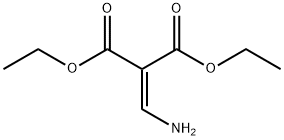Aminoacetaldehyde dimethyl acetal , 98% , 22483-09-6
Synonym(s):
2,2-Dimethoxyethylamine
CAS NO.:22483-09-6
Empirical Formula: C4H11NO2
Molecular Weight: 105.14
MDL number: MFCD00008135
EINECS: 245-026-5
| Pack Size | Price | Stock | Quantity |
| 5G | RMB23.20 | In Stock |
|
| 25G | RMB53.60 | In Stock |
|
| 100G | RMB143.20 | In Stock |
|
| 500G | RMB600.00 | In Stock |
|
| others | Enquire |
PRODUCT Properties
| Melting point: | -78°C |
| Boiling point: | 135-139 °C/95 mmHg (lit.) |
| Density | 0.965 g/mL at 25 °C (lit.) |
| refractive index | n |
| Flash point: | 128 °F |
| storage temp. | Keep in dark place,Inert atmosphere,2-8°C |
| solubility | soluble in Chloroform, Methanol |
| pka | 6.95±0.10(Predicted) |
| form | Liquid |
| color | Clear colorless to pale yellow |
| Water Solubility | miscible |
| BRN | 741868 |
| InChIKey | QKWWDTYDYOFRJL-UHFFFAOYSA-N |
| CAS DataBase Reference | 22483-09-6(CAS DataBase Reference) |
| NIST Chemistry Reference | Aminoacetaldehyde dimethyl acetal(22483-09-6) |
| EPA Substance Registry System | Ethanamine, 2,2-dimethoxy- (22483-09-6) |
Description and Uses
Aminoacetaldehyde dimethyl acetal, also known as 2,2-dimethoxy-ethylamine, is a critical intermediate in the synthesis of ivabradine hydrochloride, proline analogs, praziquantel, and other raw materials. The existing process for producing aminoacetal dimethyl acetate uses vinyl acetate as the starting material, and the target product is synthesized through bromination, Gabriel synthesis, and hydrazinolysis.
Amino acetaldehyde dimethyl was used in preparation of chitosan- dendrimer hybrids having various functional groups such as carboxyl, ester and poly(ethylene glycol). It was used in an synthesis of a bicyclic proline analog from L-ascorbic acid and in 3-component reaction catalyzed by MgClO4 leading to α-aminophosphonates.
Safety
| Symbol(GHS) |   GHS02,GHS05 |
| Signal word | Danger |
| Hazard statements | H226-H314 |
| Precautionary statements | P210-P233-P240-P280-P303+P361+P353-P305+P351+P338 |
| Hazard Codes | C,F,Xi |
| Risk Statements | 10-34-36/37/38 |
| Safety Statements | 26-36/37/39-45-16-36 |
| RIDADR | UN 1993 3/PG 3 |
| WGK Germany | 2 |
| Hazard Note | Flammable/Corrosive |
| TSCA | Yes |
| HazardClass | 3 |
| PackingGroup | III |
| HS Code | 29225000 |



